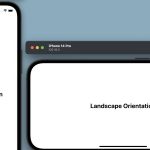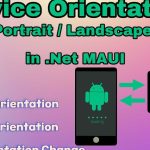
Creative Applications of Device Orientation API in Virtual Worlds
- Post
- August 8, 2023
- Device Orientation API, Web APIs, Web Technologies
- 0 Comments
In the rapidly evolving landscape of virtual worlds, the technological advancements are constantly pushing the boundaries of what’s possible. One such innovation that has gained significant attention is the Device Orientation API. While traditionally associated with gaming, this API holds untapped potential beyond the realms of gaming. In this comprehensive exploration, we delve into the creative applications of the Device Orientation API in virtual worlds, showcasing its versatility and impact across various industries.
The Device Orientation API, a JavaScript-based interface, provides access to a device’s physical orientation in three-dimensional space. This API initially gained prominence within gaming, enabling immersive experiences where players could control in-game elements through physical movements of their devices. However, its applications extend far beyond gaming, influencing industries as diverse as education, architecture, healthcare, and more.
Virtual Tourism: A New Dimension of Exploration
Virtual Tourism capitalizes on the Device Orientation API to offer users a captivating alternative to traditional travel experiences. By integrating the API with virtual reality (VR) platforms, users can virtually explore iconic landmarks, cultural sites, and natural wonders. Through the simple act of tilting or rotating their devices, users can glance around stunning landscapes, deepening their connection with distant destinations.
Imagine standing at the foot of the Eiffel Tower, virtually feeling the grandeur as you tilt your device upwards, or gazing at the intricate details of ancient ruins by moving your device from side to side. Virtual tourism powered by the Device Orientation API opens doors to global exploration, making it accessible to those who might not have the means to travel physically.
Revolutionizing Remote Learning
The Device Orientation API has found a profound application in the field of education, transforming the way students engage with content. By incorporating the API into educational apps, learners can manipulate 3D models and simulations using intuitive gestures. This hands-on approach fosters deeper understanding and retention of complex subjects, bridging the gap between theoretical knowledge and practical application.
For instance, in a biology lesson about human anatomy, students can rotate a 3D model of the human body on their screens, examining organs and systems from various angles. This interactive learning experience enhances comprehension and sparks curiosity, making education a captivating journey.
Architectural Visualization: Design in Motion
Architects and designers are leveraging the Device Orientation API to revolutionize the way structures are conceptualized and presented. With the API’s integration into architectural software, stakeholders can explore building designs in a virtual environment. By tilting their devices, they can examine facades, interiors, and layouts, gaining a comprehensive understanding of the project’s aesthetics and functionality.
This technology is especially invaluable in collaborative projects. Design teams across different locations can simultaneously engage with the virtual model, making real-time adjustments and decisions. This streamlined communication results in efficient design iterations and enhanced project outcomes.
Healthcare Training: A New Reality
In the healthcare sector, the Device Orientation API is elevating training methodologies to a new level of realism. Medical students can simulate surgical procedures and medical interventions by manipulating 3D anatomical models through device movements. This tactile engagement bridges the gap between theory and practice, enabling trainees to develop dexterity and confidence before stepping into the operating room.
Furthermore, the API’s integration with VR headsets facilitates immersive medical simulations. Aspiring surgeons can virtually step into an operating theater, experiencing the pressure and precision required during surgeries. This experiential learning approach enhances skill development and patient safety.
Navigating Complex Data Visualizations
Complex data sets and visualizations often pose challenges when conveying insights effectively. The Device Orientation API presents a novel solution by enabling users to navigate through data landscapes intuitively. Researchers, analysts, and business professionals can interact with intricate graphs, charts, and visual representations by rotating their devices.
For instance, financial analysts can explore multi-dimensional market trends by manipulating a 3D financial graph. Scientists can dive into molecular structures, examining intricate details from diverse angles. This interactive approach simplifies complex information, fostering better decision-making and knowledge dissemination.
Final Words
The Device Orientation API’s transformation from a gaming-centric tool to a multi-faceted asset in various industries highlights its versatility and potential. From virtual tourism to healthcare training, this API has transcended its initial purpose, enriching user experiences, enhancing education, and redefining how we interact with technology. As the virtual landscape continues to evolve, the Device Orientation API stands as a testament to innovation’s power in shaping our digital future.
Commonly Asked Questions
1. How does the Device Orientation API work?
The Device Orientation API utilizes sensors within devices to gather data about their physical orientation in space. By tracking movements like tilting, rotating, and shaking, the API provides real-time information that applications can utilize for interactive experiences.
2. Can the Device Orientation API be used on all devices?
While the API is compatible with a wide range of devices, its functionality may vary based on hardware and browser support. Devices equipped with gyroscopes and accelerometers tend to offer the best experience.
3. What are some creative applications of the API in education?
The API is being used to enhance remote learning by enabling students to interact with 3D models, simulations, and educational content through physical device movements. It brings a tactile element to digital learning, promoting engagement and understanding.
4. How is the healthcare sector benefiting from the API?
Medical training and simulation have been revolutionized with the API’s integration. Trainee doctors can practice surgical procedures on virtual patients, gaining practical experience before working on real cases.
5. What’s the future potential of the Device Orientation API?
As technology continues to advance, the API’s applications will likely expand. It could play a significant role in industries such as remote collaboration, design, entertainment, and more, offering new ways for users to interact with digital environments.




